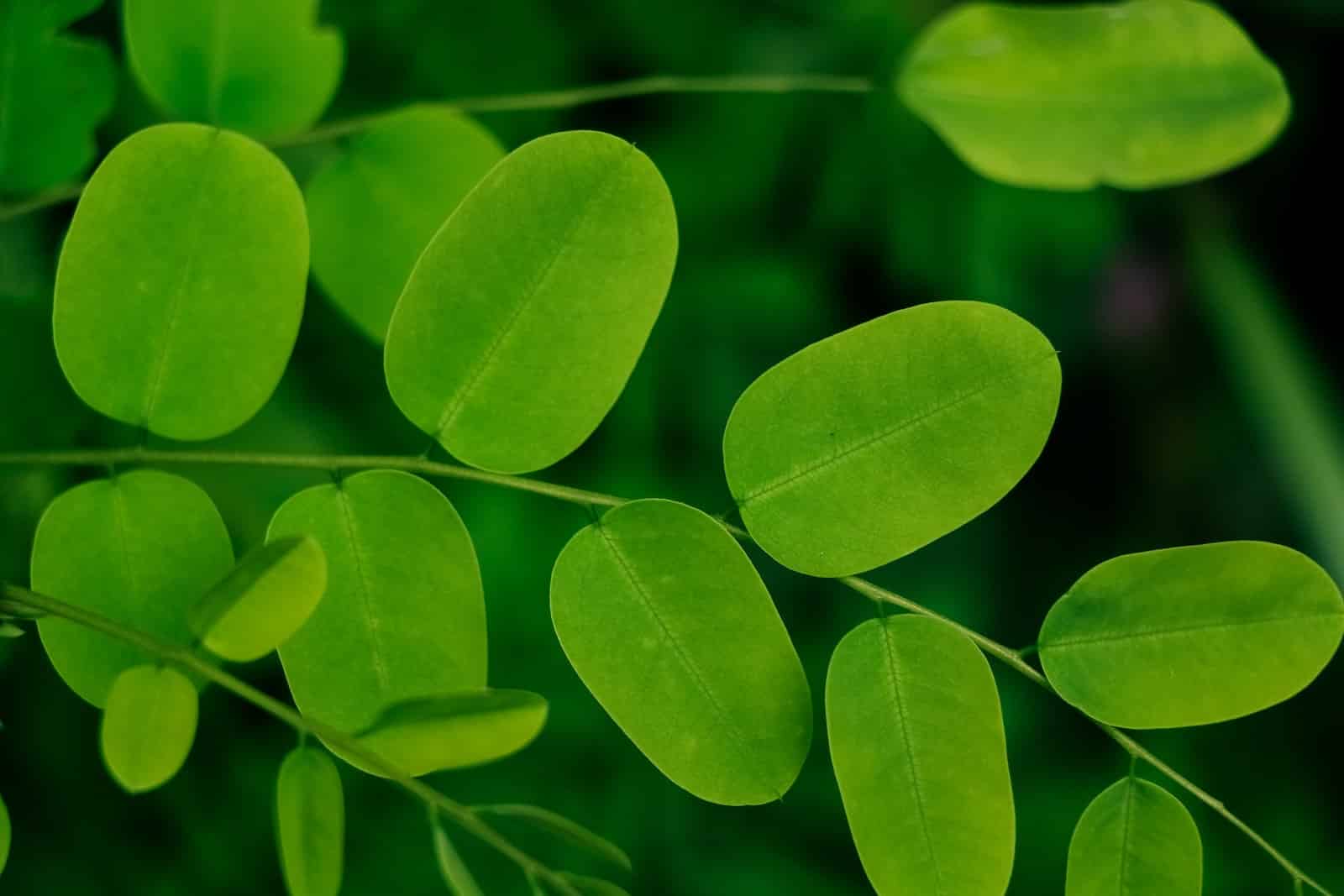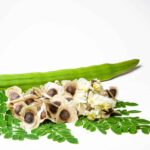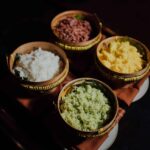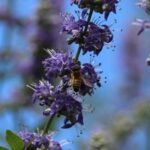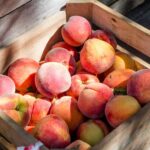Moringa oleifera, commonly known as the drumstick tree or simply moringa, is a fast-growing, drought-resistant plant that is native to tropical and subtropical regions of South Asia. The tree is known for its numerous health benefits, as almost all parts of the plant, including the leaves, pods, and seeds, are used for medicinal and nutritional purposes. Moringa is also used in cosmetics and as a natural water purifier.
If you’re interested in growing and caring for moringa, this comprehensive guide will provide you with everything you need to know, including tips on planting, pruning, harvesting, and pest control. We’ll also cover the benefits of moringa and the different ways it can be used.
Why Grow Moringa?
Before we dive into the details of growing and caring for moringa, let’s first explore why you might want to consider growing this plant.
1. Nutritional Value
Moringa is a superfood, packed with vitamins, minerals, and antioxidants. According to the USDA, 100 grams of fresh moringa leaves contain:
- 9.3 grams of protein
- 434 mg of calcium
- 164 mg of magnesium
- 404 mg of potassium
- 738 µg of vitamin A
- 164 mg of vitamin C
Moringa leaves also contain high amounts of iron, vitamin E, and B vitamins.
2. Medicinal Properties
Moringa has been used in traditional medicine for centuries to treat a variety of ailments, including:
- Inflammation
- High blood pressure
- High cholesterol
- Anemia
- Diabetes
- Digestive disorders
- Skin infections
The leaves, pods, and seeds of the moringa plant all have medicinal properties and are used in different ways to treat various conditions.
3. Environmental Benefits
Moringa is a hardy, drought-resistant plant that can grow in poor soil and arid conditions. It also has a deep root system that helps prevent soil erosion. In addition, the plant is known for its ability to purify water, making it a valuable resource in areas where access to clean water is limited.
4. Versatility
Moringa is a versatile plant that can be used in a variety of ways, from cooking and nutrition to medicine and cosmetics. All parts of the plant are used in different ways, making it a valuable resource for communities in developing countries.
Now that you know some of the benefits of growing moringa, let’s dive into how to grow and care for it.
How to Grow Moringa
1. Climate and Soil Requirements
Moringa grows best in tropical and subtropical regions, where the temperature ranges from 20 to 35°C (68 to 95°F). The plant can tolerate a wide range of soil types but prefers well-drained, sandy or loamy soil. It can also grow in poor soil conditions and is resistant to drought.
2. Planting Moringa
Moringa can be grown from seeds or cuttings. To plant from seeds, soak them in water for 24 hours before planting. Plant the seeds about 1 inch deep in the soil, with a spacing of 3 to 5 feet between each plant. Water the seeds regularly and keep the soil moist until the seedlings emerge.
If you’re planting cuttings, choose a healthy branch from an existing moringa tree and cut it at an angle. Remove the leaves from the lower part of the stem and plant the cutting in a pot or directly in the soil. Water the cutting regularly and keep the soil moist until it begins to establish roots.
3. Watering and Fertilizing
Moringa trees require regular watering, especially during the first few months after planting. Once the tree is established, it can tolerate drought conditions, but it’s still important to keep the soil moist. Moringa trees benefit from regular fertilization, especially with organic matter like compost or manure.
4. Pruning
Moringa trees can grow up to 30 feet tall, but they can also be pruned to maintain a smaller size. Pruning can help encourage new growth and increase the yield of leaves and pods. You can prune the tree back to a height of 3 to 5 feet and remove any dead or diseased branches.
5. Harvesting
Moringa leaves can be harvested as early as 6 months after planting. The leaves should be harvested when they are young and tender, as older leaves can be tough and bitter. You can harvest the leaves by plucking them off the branches or by cutting the branches with a pruning shear.
Moringa pods can also be harvested when they are young and tender. The pods should be harvested before the seeds inside begin to mature. You can harvest the pods by cutting them off the tree with a knife or pruning shear.
Pest and Disease Control
Moringa is a relatively pest and disease-resistant plant, but it’s still important to monitor your trees for any signs of infestation or disease. Some common pests that can affect moringa trees include aphids, mealybugs, and whiteflies. To control these pests, you can use natural remedies like neem oil or a solution of water and soap.
Diseases that can affect moringa trees include root rot, leaf spot, and powdery mildew. To prevent these diseases, it’s important to maintain good soil drainage, avoid overwatering, and keep the leaves dry.
How to Use Moringa
Moringa is a versatile plant that can be used in a variety of ways. Here are some of the most common uses for moringa:
1. Nutrition
Moringa leaves are a nutritious addition to any diet. You can eat the leaves raw or cooked, or add them to smoothies, soups, and salads. Moringa leaves can also be dried and ground into a powder, which can be added to a variety of foods and beverages.
2. Medicine
Moringa has numerous medicinal properties and is used to treat a variety of ailments. The leaves, pods, and seeds of the moringa plant can be used in different ways to treat various conditions. For example:
- Moringa leaves can be used to treat inflammation, high blood pressure, and anemia.
- Moringa pods can be used to treat digestive disorders and skin infections.
- Moringa seeds can be used to purify water and treat diabetes.
3. Cosmetics
Moringa oil is a popular ingredient in cosmetics and skincare products. The oil is rich in vitamins and antioxidants and is known for its moisturizing and anti-aging properties.
4. Water Purification
Moringa seeds can be used to purify water, making it safe for drinking and cooking. The seeds contain natural compounds that can remove impurities from water and kill harmful bacteria.
Conclusion
Growing and caring for moringa is a rewarding experience that can provide you with a valuable resource for nutrition, medicine, and environmental sustainability. By following the tips and techniques outlined in this guide, you can successfully grow and harvest moringa trees and use them to improve your health and well-being.
Remember to monitor your trees for pests and disease and to harvest theleaves and pods at the right time to ensure maximum nutritional value. With a little care and attention, you can enjoy the benefits of moringa for years to come.
Additional Tips and Resources
Here are some additional tips and resources to help you grow and care for moringa:
1. Companion Planting
Moringa can benefit from companion planting, where you plant other plants alongside it that can help improve soil quality, repel pests, or provide shade. Some good companion plants for moringa include legumes, such as beans and peas, which can help fix nitrogen in the soil, and herbs, such as basil and mint, which can help repel pests.
2. Moringa Products
If you don’t have the space or time to grow your own moringa trees, you can still enjoy the benefits of moringa by purchasing moringa products. These can include moringa tea, capsules, powder, and oil, which can be found online or at health food stores.
3. Moringa Recipes
If you’re looking for inspiration on how to use moringa in your cooking, there are many recipes available online. Moringa can be used in a variety of dishes, from smoothies and salads to soups and stews. Some popular moringa recipes include moringa pesto, moringa soup, and moringa smoothies.
4. Moringa Research
There is a growing body of research on the benefits of moringa, both for human health and environmental sustainability. If you’re interested in learning more about the science behind moringa, there are many academic articles and studies available online.
Frequently Asked Questions
Here are some frequently asked questions about growing and caring for moringa:
1. How long does it take for moringa to grow?
Moringa trees can grow quickly, and you can start harvesting the leaves as early as 6 months after planting. However, it can take up to 2 years for the tree to reach full maturity and produce a significant yield of leaves and pods.
2. How often should I water my moringa tree?
Moringa trees require regular watering, especially during the first few months after planting. Once the tree is established, it can tolerate drought conditions, but it’s still important to keep the soil moist. The frequency of watering will depend on the climate and soil conditions, but a general rule of thumb is to water the tree once a week.
3. How do I know when to harvest moringa leaves and pods?
Moringa leaves should be harvested when they are young and tender, as older leaves can be tough and bitter. You can harvest the leaves by plucking them off the branches or by cutting the branches with a pruning shear. Moringa pods should be harvested when they are young and tender, before the seeds inside begin to mature. You can harvest the pods by cutting them off the tree with a knife or pruning shear.
4. How do I prevent pests and diseases from affecting my moringa tree?
Moringa is a relatively pest and disease-resistant plant, but it’s still important to monitor your trees for any signs of infestation or disease. Some common pests that can affect moringa trees include aphids, mealybugs, and whiteflies. To control these pests, you can use natural remedies like neem oil or a solution of water and soap. Diseases that can affect moringa trees include root rot, leaf spot, and powdery mildew. To prevent these diseases, it’s important to maintain good soil drainage, avoid overwatering, and keep the leaves dry.
5. What are the benefits of moringa oil for skin?
Moringa oil is a popular ingredient in skincare products due to its high concentration of antioxidants and anti-inflammatory properties. Some benefits of using moringa oil for skin include:
- Moisturizes dry skin: Moringa oil is rich in oleic acid, which helps to lock in moisture and keep skin hydrated.
- Soothes inflammation: Moringa oil contains anti-inflammatory compounds that can help soothe irritated skin and reduce redness.
- Fights signs of aging: Moringa oil is rich in antioxidants, which can help protect the skin from free radical damage and reduce the appearance of fine lines and wrinkles.
- Improves skin texture: Moringa oil is easily absorbed into the skin, making it a great choice for improving the texture and tone of the skin.
6. Can moringa be grown in containers?
Yes, moringa can be grown in containers, making it a great choice for those with limited garden space. To grow moringa in containers, choose a pot that is at least 12 inches deep and wide, with good drainage. Fill the pot with well-draining soil, and plant the moringa seed or cutting as you would in the ground. Water the tree regularly and fertilize it with compost or a balanced fertilizer.
7. How do I propagate moringa?
Moringa can be propagated through seeds, cuttings, or air layering. To propagate through seeds, soak the seeds in water for 24 hours before planting them in well-draining soil. To propagate through cuttings, choose a healthy branch from an existing moringa tree and cut it at an angle. Remove the leaves from the lower part of the stem and plant the cutting in a pot or directly in the soil. To propagate through air layering, make a small incision in the bark of a branch and wrap it with moist sphagnum moss. Cover the moss with plastic wrap and secure it with tape. Roots will grow from the incision, and once they have established, you can cut the branch and plant it in soil.
8. Can moringa be grown indoors?
Moringa can be grown indoors, but it requires a lot of sunlight and space to grow. To grow moringa indoors, choose a sunny location near a window or under grow lights. Plant the moringa seed or cutting in a pot with well-draining soil, and water it regularly. Keep the tree pruned to maintain a smaller size, and fertilize it with compost or a balanced fertilizer.
9. What are the different types of moringa?
There are several different varieties of moringa, including:
- Moringa oleifera: This is the most common variety of moringa, and the one that is most widely used for nutrition and medicinal purposes.
- Moringa stenopetala: This variety of moringa is native to Ethiopia and is used for its nutritious leaves and seeds.
- Moringa drouhardii: This variety of moringa is native to Madagascar and is known for its hardy, drought-resistant nature.
- Moringa hildebrandtii: This variety of moringa is native to Kenya and Tanzania and is used for its nutritious leaves and pods.
10. What are the side effects of moringa?
Moringa is generally safe for most people when consumed in moderate amounts. However, some people may experience side effects, including:
- Upset stomach
- Diarrhea
- Nausea
- Headaches
- Allergic reactions

